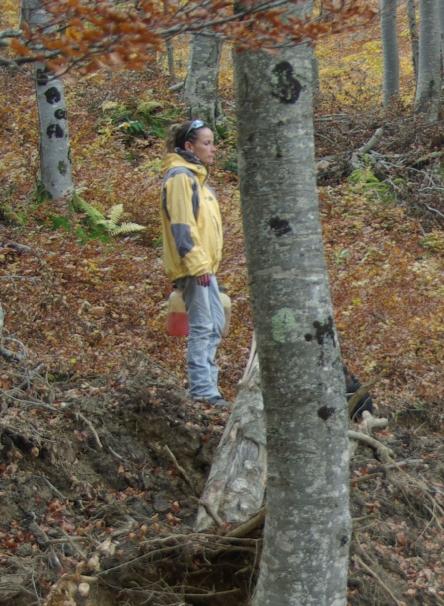-
Partager cette page
The beech-fir forest, the baseline natural forest ecosystem in the montane belt of temperate Europe: questioning an ecological myth
Article cosigné Mélanie Saulnier
Publié le 28 avril 2025 – Mis à jour le 28 avril 2025
• Historical ecology reveals the long-term co-construction of the current European beech-fir old-growth forests. • European temperate OGFs are not “primary’ • Insights for the implementation of a biodiversity-friendly forest management.

The present study aims to challenge and refine the existing paradigm of relict primary forests located in temperate Europe and to clarify their long-term dynamics. We focussed on the beech-fir (Fagus sylvatica L.-Abies alba Mill.) forest located in the montane belt of Romanian Carpathian Mountains and French Central Pyrenees.
An hierarchical sampling strategy was employed, encompassing a multi-proxies study of two cores extracted from one peat bog (Romania) and one lake (France) in proximity to six best-preserved Old-Growth Forests (OGFs), complemented by an archaeological survey on 40 ha, the study of historical archives (16th-20th c.), the soil charcoal analysis of 16 pits, and the charcoal analysis and radiocarbon dating of former charcoal kiln platforms (n = 41).
The results enabled the reconstruction of the Holocene vegetation history of these OGFs from the postglacial forest recovery and to highlight the main anthropogenic phases since c. 4000 BP. At the local scale, in the heart of the OGFs, we detected direct traces of human activities from the Bronze Age, with a sharp increase in the Modern Times, influencing forest composition and dynamics.
Our results upset the paradigm of relict primary forests in temperate Europe. The montane ‘climax’ beech-fir forest used as baseline for natural forest conservation is the result of a co-construction between natural and anthropogenic processes.
The biodiversity observed in contemporary OGFs can be attributed to the characteristics of maturity that have emerged in the absence of human economic activities for several decades. This underscores the necessity for biodiversity-friendly forest management strategies.
An hierarchical sampling strategy was employed, encompassing a multi-proxies study of two cores extracted from one peat bog (Romania) and one lake (France) in proximity to six best-preserved Old-Growth Forests (OGFs), complemented by an archaeological survey on 40 ha, the study of historical archives (16th-20th c.), the soil charcoal analysis of 16 pits, and the charcoal analysis and radiocarbon dating of former charcoal kiln platforms (n = 41).
The results enabled the reconstruction of the Holocene vegetation history of these OGFs from the postglacial forest recovery and to highlight the main anthropogenic phases since c. 4000 BP. At the local scale, in the heart of the OGFs, we detected direct traces of human activities from the Bronze Age, with a sharp increase in the Modern Times, influencing forest composition and dynamics.
Our results upset the paradigm of relict primary forests in temperate Europe. The montane ‘climax’ beech-fir forest used as baseline for natural forest conservation is the result of a co-construction between natural and anthropogenic processes.
The biodiversity observed in contemporary OGFs can be attributed to the characteristics of maturity that have emerged in the absence of human economic activities for several decades. This underscores the necessity for biodiversity-friendly forest management strategies.





